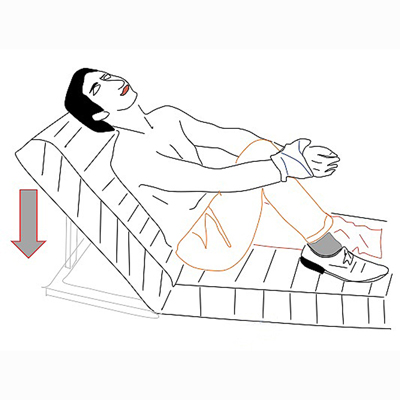Reduction of shoulder dislocation in times of pandemic. A new light shining through an old window
Main Article Content
Abstract
Downloads
Metrics
Article Details
Manuscript acceptance by the Journal implies the simultaneous non-submission to any other journal or publishing house. The RAAOT is under the Licencia Creative Commnos Atribución-NoComercial-Compartir Obras Derivadas Igual 4.0 Internacional (CC-BY-NC.SA 4.0) (http://creativecommons.org/licences/by-nc-sa/4.0/deed.es). Articles can be shared, copied, distributed, modified, altered, transformed into a derivative work, executed and publicly communicated, provided a) the authors and the original publication (Journal, Publisher and URL) are mentioned, b) they are not used for commercial purposes, c) the same terms of the license are maintained.
In the event that the manuscript is approved for its next publication, the authors retain the copyright and will assign to the journal the rights of publication, edition, reproduction, distribution, exhibition and communication at a national and international level in the different databases. data, repositories and portals.
It is hereby stated that the mentioned manuscript has not been published and that it is not being printed in any other national or foreign journal.
The authors hereby accept the necessary modifications, suggested by the reviewers, in order to adapt the manuscript to the style and publication rules of this Journal.
References
Davos technique. Clin Pract Cases Emerg Med 2019;22:3(1):40-2. https://doi.org/10.5811/cpcem.2018.11.39445
2. Amar E, Maman E, Khashan M, Kauffman E, Rath E, Chechik O. Milch versus Stimson technique for nonsedated
reduction of anterior shoulder dislocation: a prospective randomized trial and analysis of factors affecting
success. J Shoulder Elbow Surg 2012;21(11):1443-9. https://doi.org/10.1016/j.jse.2012.01.004
3. Marinelli M, de Palma L. The external rotation method for reduction of acute anterior shoulder dislocations.
J Orthop Traumatol 2009;10(1):17-20. https://doi.org/10.1007/s10195-008-0040-4
4. Regauer M, Polzer H, Mutschler W. Neurovascular complications due to Hippocrates method to reduce anterior shoulder dislocations. World J Orthop 2014;5(1):57-61. https://doi.org/10.5312/wjo.v5.i1.57
5. Anjum R, Pathak S, Rai Sharma A, Aggarwal J, Sharma A, Pruthi V, et al. Reducing shoulder dislocation without
anaesthesia or assistant: Validation of a new reduction manoeuvre. Chinese J Traumatol 2019;22(5):274-7.
https://doi.org/10.1016/j.cjtee.2019.05.004
6. Liang T. Handbook of COVID-19. Prevention and Treatment. Disponible en:
https://covid-19.conacyt.mx/jspui/bitstream/1000/25/1/Handbook_of_COVID_19_Prevention_en_Mobile.pdf
7. Marcano-Fernández FA, Balaguer-Castro M, Fillat-Gomà F, Ràfols-Perramon O, Torrens C, Torner P. Teaching
patients how to reduce a shoulder dislocation: a randomized clinical trial comparing the Boss-Holzach-Matter selfassisted technique and the Spaso method. J Bone Joint Surg Am 2018;100 (5):375-80. https://doi.org/10.2106/JBJS.17.00687
8. Nicholson DA, Lang I, Hughes P, Driscoll PA. ABC of emergency radiology. The shoulder. BMJ 1993;307(6912):
1129-34. https://doi.org/10.1136/bmj.307.6912.1129
9. Alkaduhimi H, van der Linde JA, Flipsen M, van Deurzen DFP, MPJ van den Bekerom Turk. A systematic and
technical guide on how to reduce a shoulder dislocation. J Emerg Med 2016;16(4):155-68.
https://doi.org/10.1016/j.tjem.2016.09.008
10. Ward JP, Bradley JP. Decision making in the in-season athlete with shoulder instability. Clin Sports Med
2013;32(4):685-96. https://doi.org/10.1016/j.csm.2013.07.005
11. Lachance PA. Reduction of shoulder dislocation. Are communication and adequate relaxation more important than technique? Can Fam Physician 2012;58 (11):1189-90. Disponible en: https://www.cfp.ca/content/58/11/1189.short

